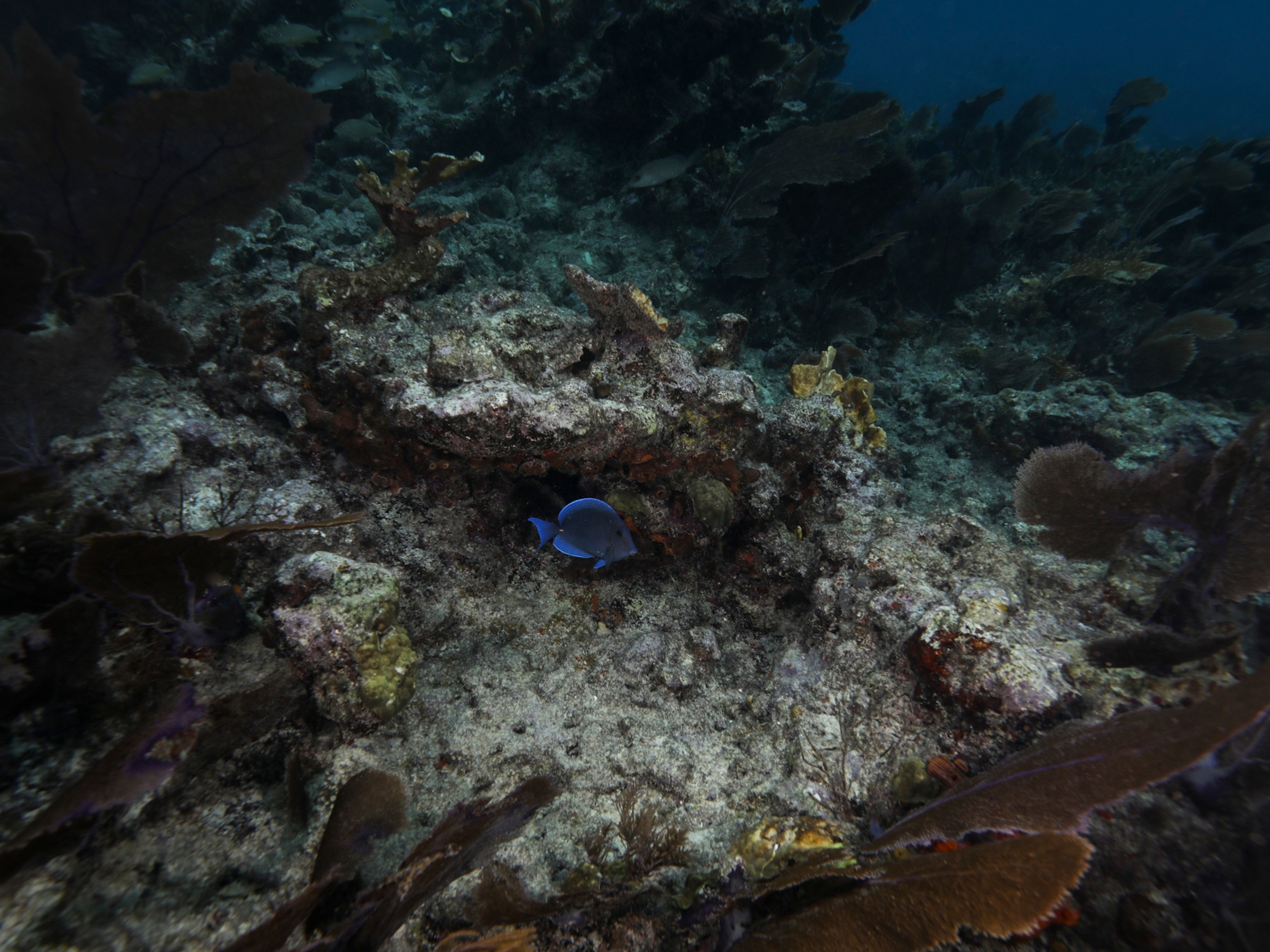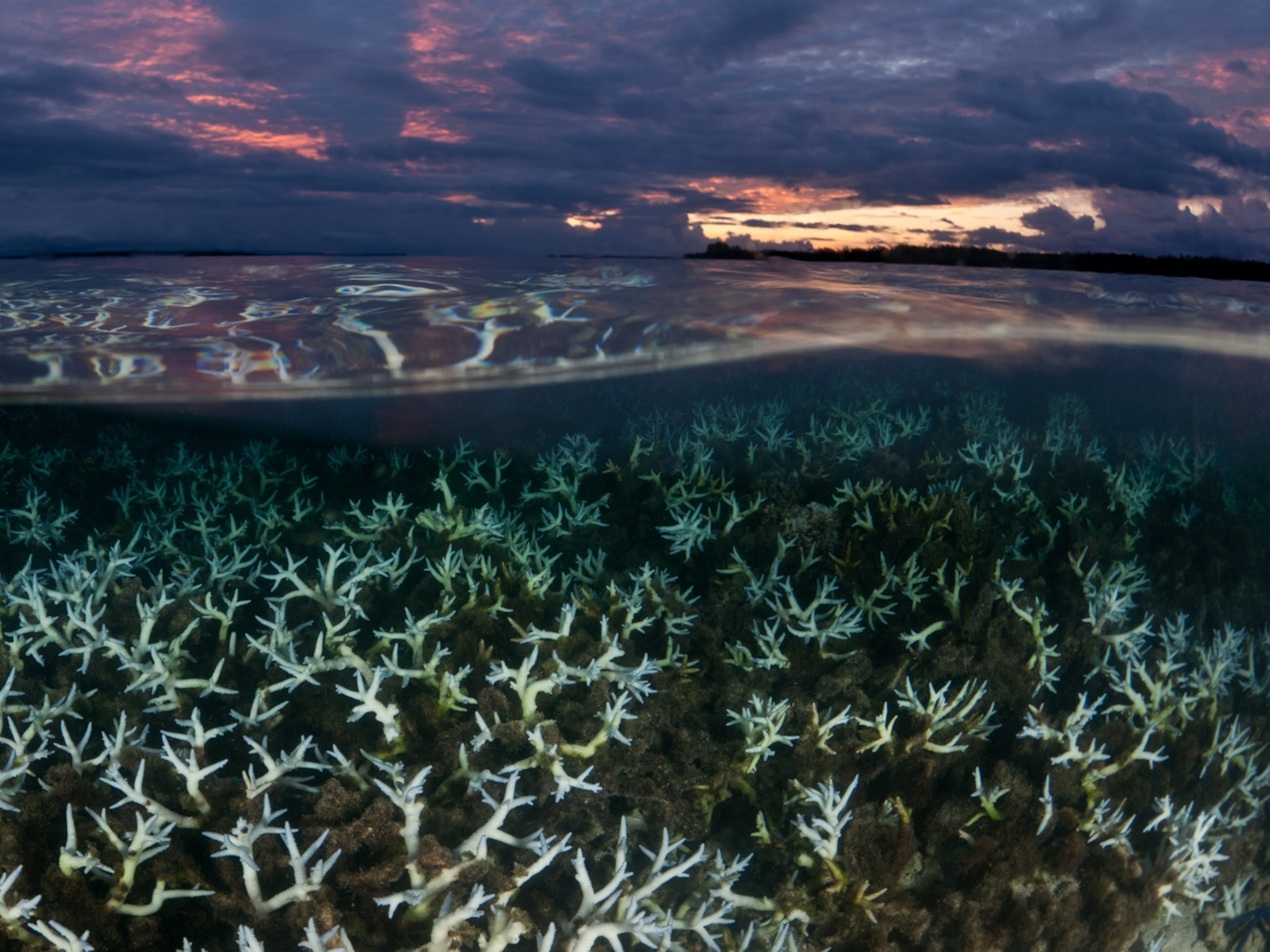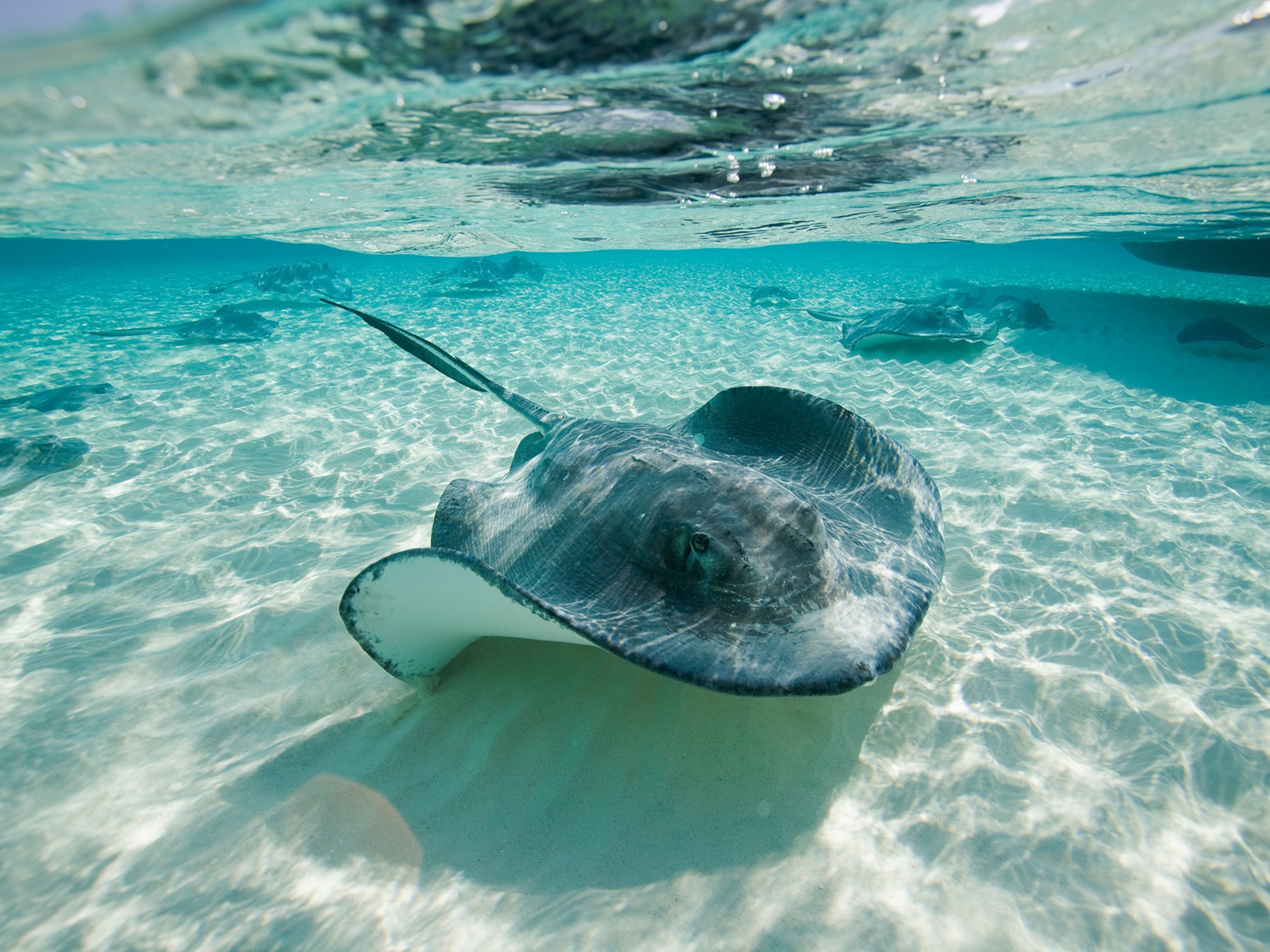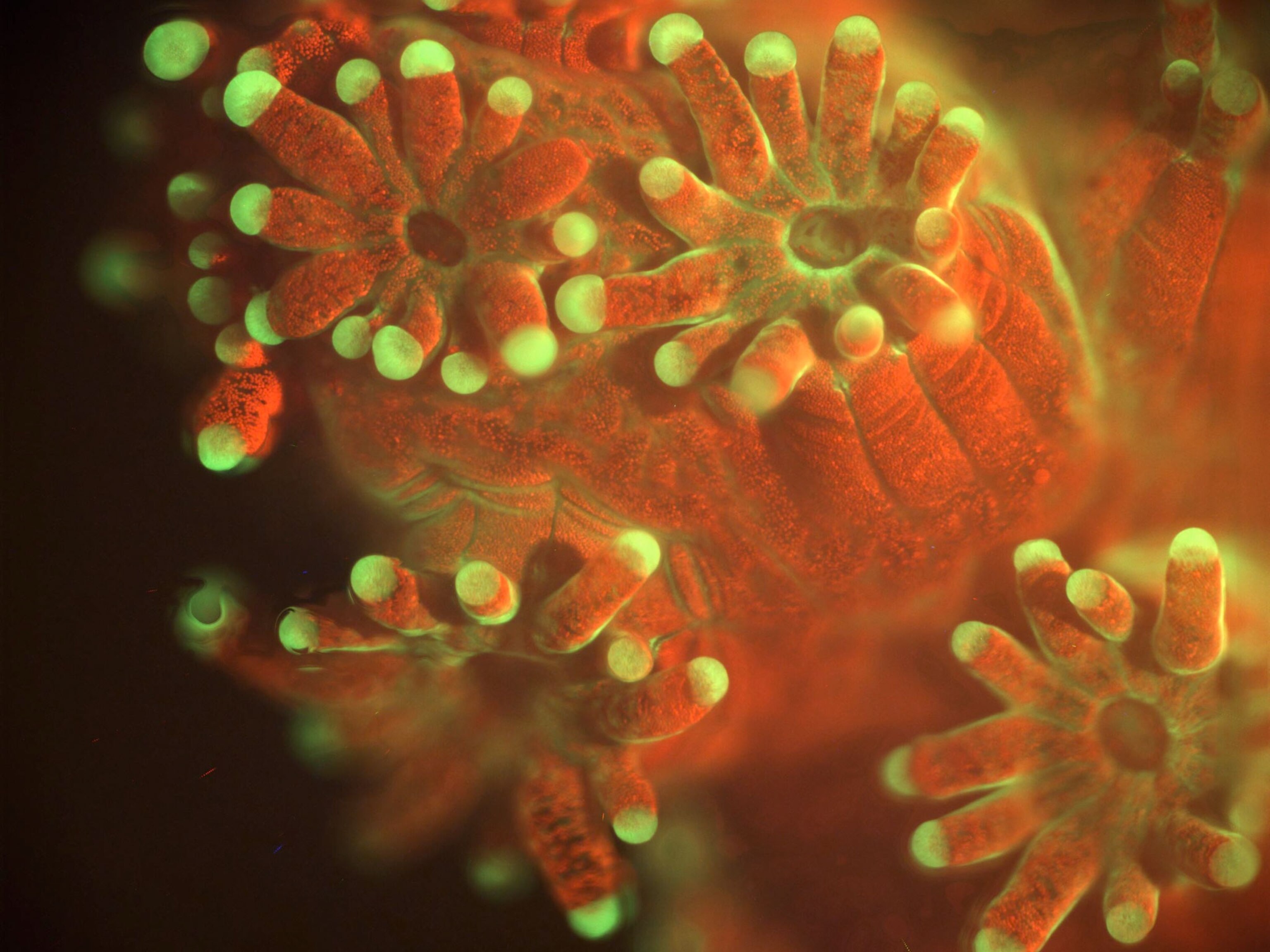
'Kissing' Corals Filmed in the Wild for the First Time
New underwater microscope gives scientists an extreme close-up of life in a reef.
Corals reefs can stretch for thousands of kilometres, and the photogenic menagerie of animals they house is obvious to the naked eye. But reefs are built by tiny coral polyps—tentacled animals that look like sea anemones and are just millimetres in size.
The microbes they depend on, including the algae that provide them with energy and the bacteria and viruses that smother their surfaces, are smaller still. To understand how reefs really work, you need to look closer.
So Andrew Mullen and Tali Treibitz from the University of California San Diego have created an underwater microscope that, for the first time, allows divers to zoom in on wild corals. They call it the Benthic Underwater Microscope, or BUM.
Using the BUM, the team have witnessed a side to corals that, to their knowledge, has never been documented before. They set the microscope up in a reef in the Red Sea and left it running overnight. When they reviewed the footage the next day, they saw that neighbouring polyps would periodically lean across and press their mouths together.
They call this “polyp kissing,” and they suspect that the corals are, for whatever reason, exchanging food or nutrients. “We’re definitely the first to see it in the field,” says Mullen.
The new microscope consists of a camera, lens, and six bright LEDs that act as a flash, all contained within a forearm-sized cylinder and controlled by an underwater computer. The lens works much like the human eye—a flexible membrane surrounded by fluid. By changing the pressure of the fluid, you can quickly and accurately adjust the shape of the membrane, and thus the depth at which it is focusing.
Typically, scientists have done taken coral samples back to a lab and observed them under a microscope. Such trips risk damaging these fragile creatures, and labs can never truly replicate the complex and ever-changing environment of the ocean.
The BUM can resolve objects just a couple of micrometres (millionths of a metre) apart, which means that scientists can easily take snapshots of coral polyps as well as the algal cells that they rely upon.
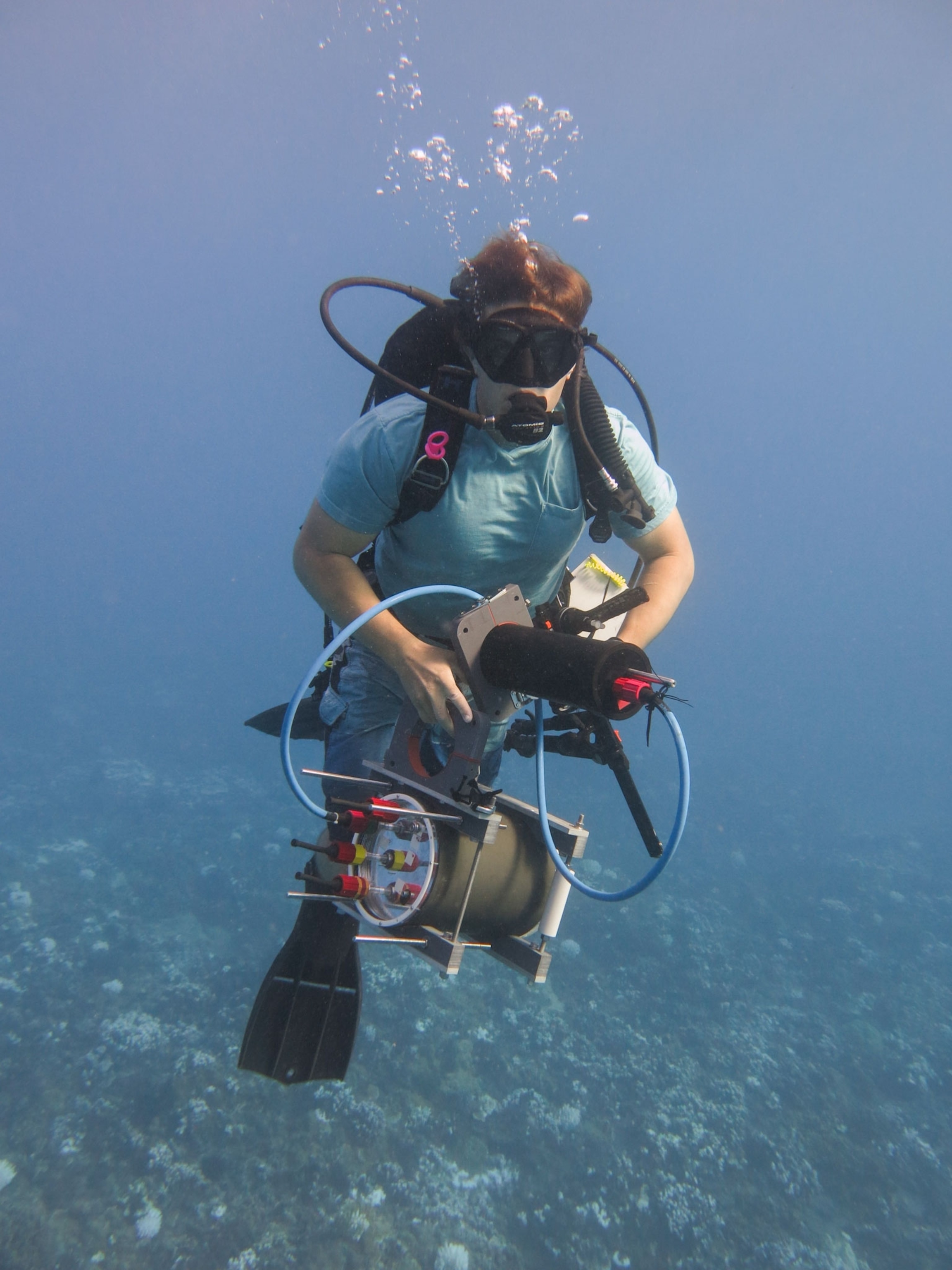
Mullen and Treibitz also set up the lens to work at a safe distance, so they can place the BUM up to 6 centimetres from a piece of coral. “If we’re going to go to this big expensive effort of looking at these things in the ocean, we don’t want to disturb them,” says Mullen.
They saw other traces of coordinated behaviour among the corals. While these animals get a lot of their food from their algal partners, they are also predators, which can catch plankton using venomous stinging cells. Mullen and Treibitz found that if one polyp captures a glut of plankton, it would often intertwine its tentacles with that of its neighbours to cooperatively digest the prey.
It’s not all harmony and peace in the reef, though. By moving some coral colonies next to others, Mullen and Treibitz used the BUM to film them fighting. If different species ended up as neighbours, they would extrude white webs. These ‘mesenterial filaments’ are actually part of their digestive systems, and loaded with stinging cells. By literally spilling their guts onto each other, the corals attack and kill their rivals. This warfare is well known to coral researchers and reef hobbyists.
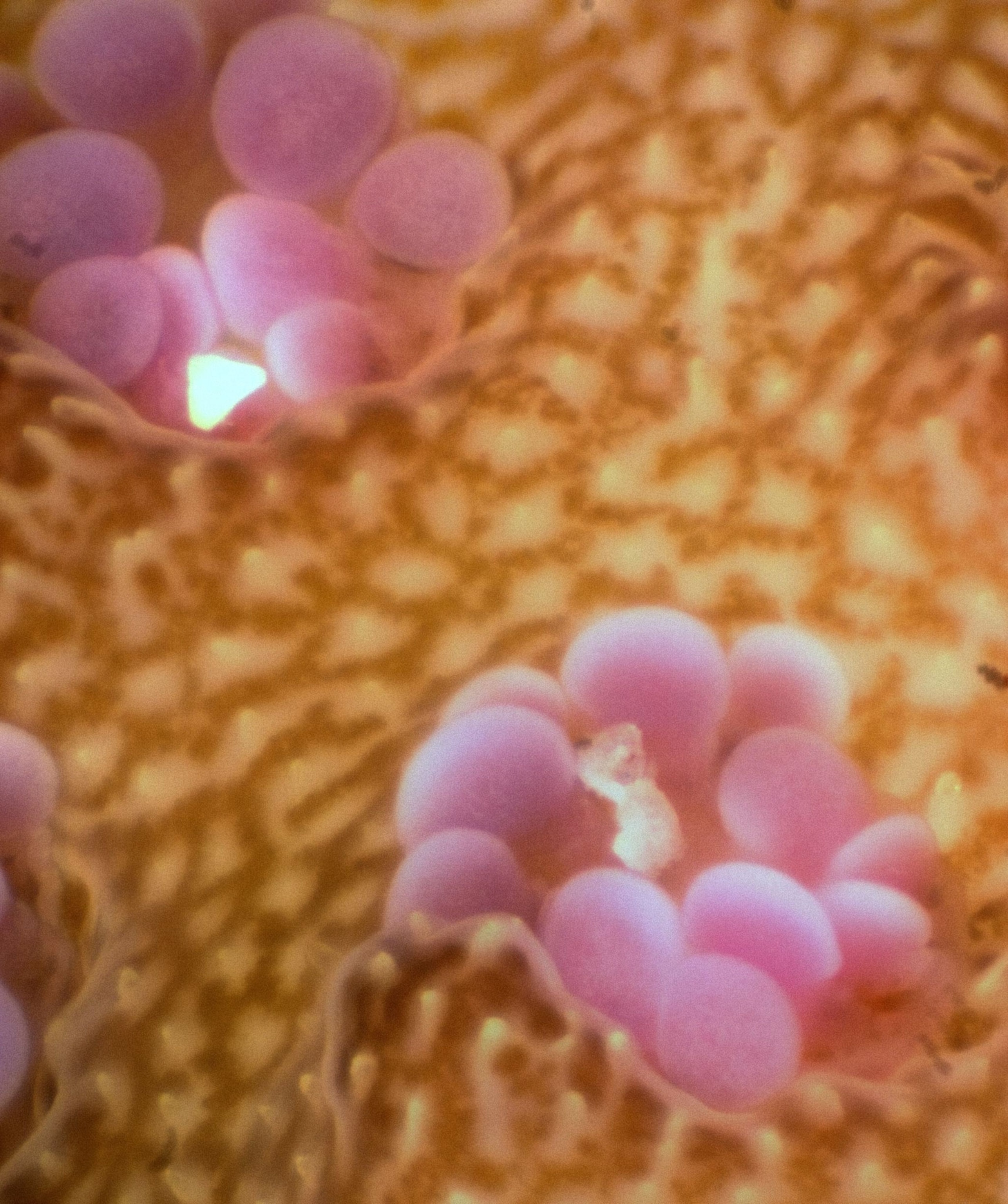
But with the BUM, “we can really start to see the fine-scale detail and the behaviour of individual polyps,” says Mullen.
Corals have other rivals to worry about, too. When warm temperatures cause them to expel their algal allies, they lose both their energy supply and colour. In this bleached and vulnerable state, they can be rapidly overgrown by another kind of algae called turf algae. This much was known, but the BUM team showed that the turf algae don’t actually grow over the polyps; instead, they grow around and between them, creating a honeycomb-like grid. That’s an important first step to truly understanding how the battles between corals and turf algae start to tip in a bleached reef, and why exactly the corals start to die.
“One of the things I’m excited about is letting coral ecologists get their hands on the technology,” says Mullen. “They’re the ones who’ll come up with useful ideas about how to use it.” He and his colleagues are now trying to make the BUM smaller, cheaper, and easier to use. They also want to equip it with special features, like the ability to trace the movements of small particles in the water, or to measure the concentrations of important chemicals.
The time is right for technology like this, because it’s now clear that so much of the ocean is governed by microbes—life forms that we cannot see with the naked eye. They produce much of the oxygen we breathe. They break down contaminants released by oil spills. They influence the fates of coral reefs. As one marine biologist noted in 2002, a microscope that could visualise these microbes in their natural environment could “do for microbial ecology what Galileo’s telescope did for astronomy.”


